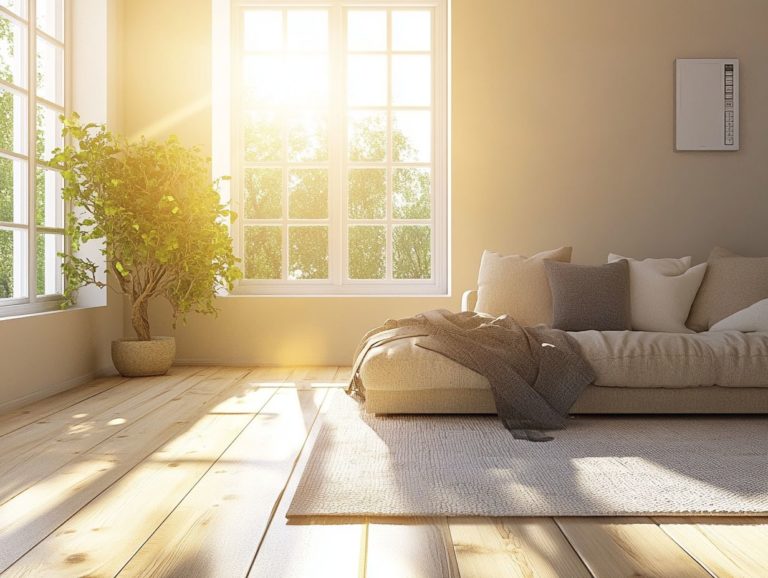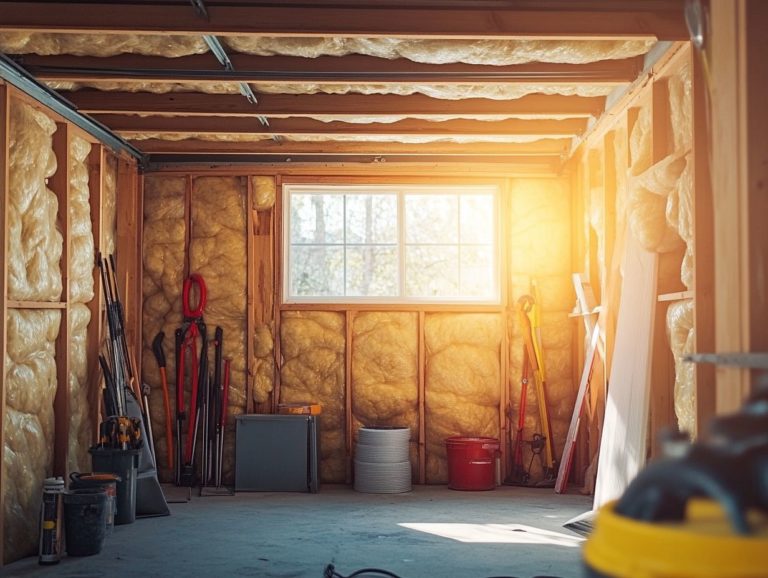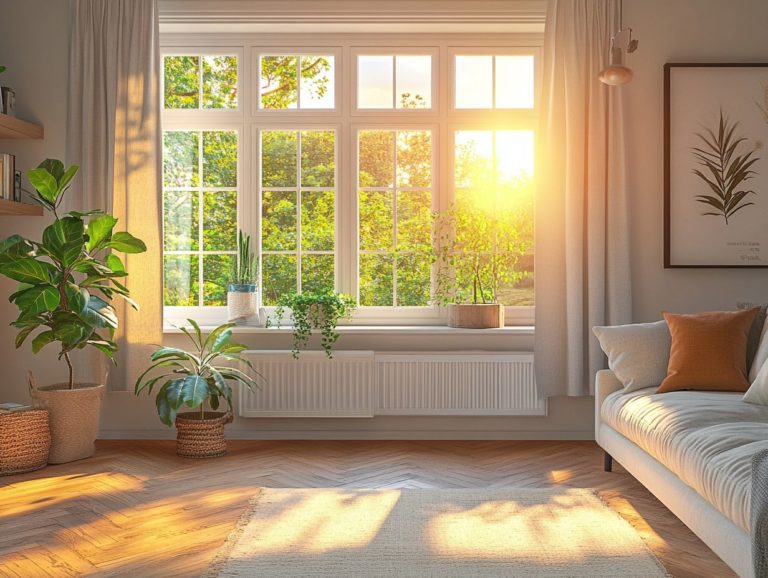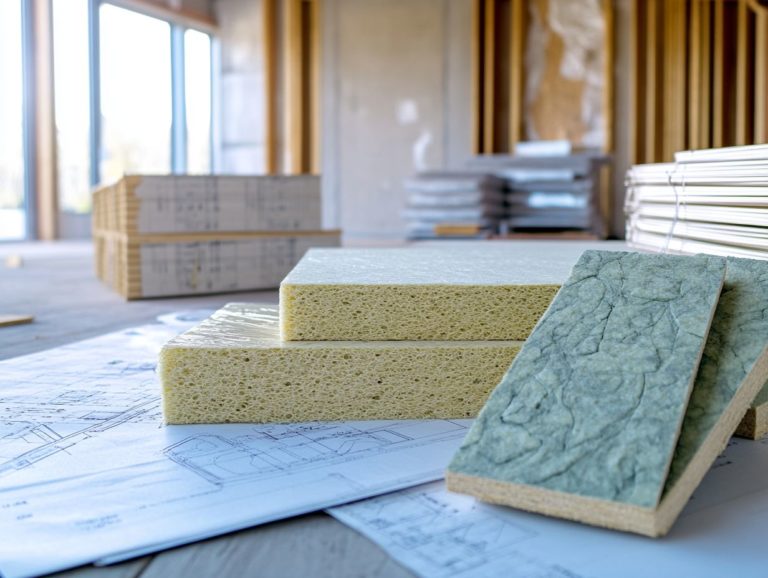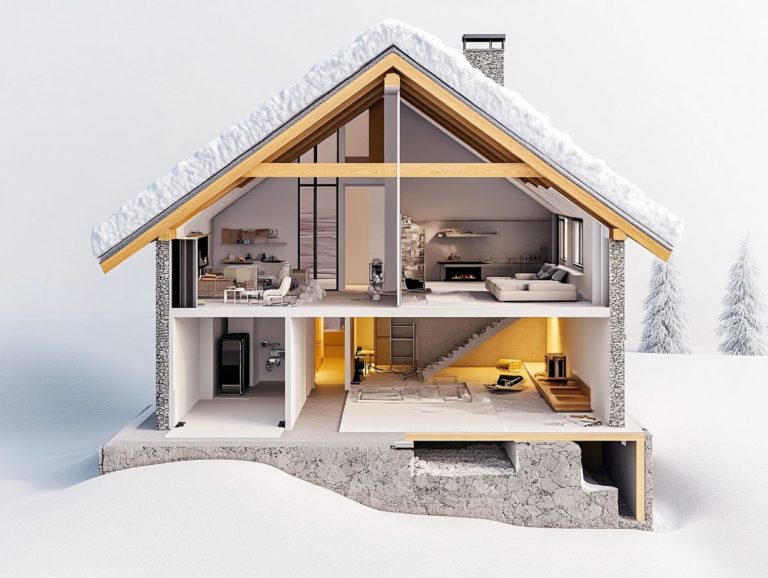5 Common Weatherproofing Failures to Avoid
Weatherproofing your home is essential for maintaining comfort, enhancing energy efficiency, and safeguarding your investment. However, many homeowners overlook critical areas, which can lead to costly issues down the line.
This article delves into five common weatherproofing failures, such as improperly sealed windows and neglected insulation, that you need to be aware of. It also highlights the benefits of effective weatherproofing, signs that indicate potential failures, and practical tips for tackling both DIY fixes and knowing when to call in a professional.
Continue reading to ensure your home remains safe and energy-efficient throughout the year!
Contents
- Key Takeaways:
- 1. Not Properly Sealing Windows and Doors
- 2. Neglecting to Insulate Attic and Crawl Spaces
- 3. Not Maintaining Gutters and Downspouts
- 4. Improperly Installed Roofing
- 5. Using Low-Quality or Improper Materials
- What Are the Benefits of Weatherproofing Your Home?
- Got Questions? We ve Got Answers!
- What are the five common weatherproofing failures to avoid?
- How does improper installation contribute to weatherproofing failures?
- What role does maintenance play in preventing weatherproofing failures?
- How can using poor quality materials impact weatherproofing?
- Why is it important to consider local weather conditions when weatherproofing a building?
- Can poor design contribute to weatherproofing failures?
Key Takeaways:
- Properly seal windows and doors to prevent drafts and water leaks.
- Insulate attics and crawl spaces to improve energy efficiency and prevent moisture buildup.
- Regularly maintain gutters and downspouts to avoid water damage to the exterior and foundation.
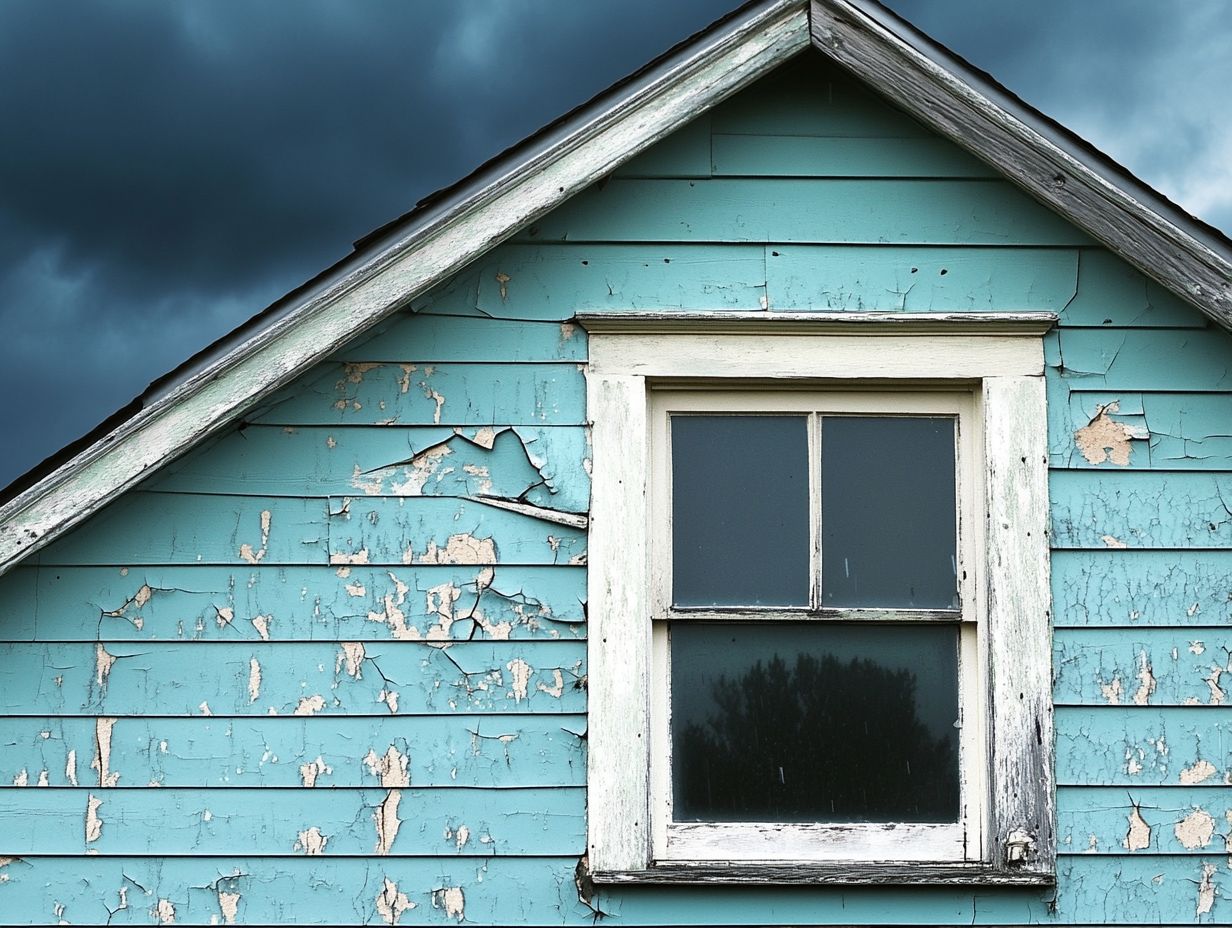
1. Not Properly Sealing Windows and Doors
Neglecting to seal your windows and doors can lead to significant water leaks, especially in your basement. Don t let this small mistake lead to big repair bills!
Common materials like waterproof paint and sealants act as barriers against water penetration, but their effectiveness depends on using proper application techniques. Studies reveal that nearly 38% of homes encounter moisture-related issues because of inadequate sealing practices.
By hiring reliable waterproofing contractors, you can ensure these materials are applied under optimal conditions. This prevents future leaks and saves you from extensive repairs. With their training and experience, these professionals can pinpoint vulnerable areas and provide tailored solutions to strengthen your home against water leaks.
Ultimately, investing in expert services enhances your property s lifespan and protects your family s health and comfort.
2. Neglecting to Insulate Attic and Crawl Spaces
Failing to insulate your attics and crawl spaces creates an inviting atmosphere for moisture buildup. This can lead to flooding issues and undermine the structural integrity of your home.
Increased humidity can set the stage for mold growth and decay in wooden structures, posing risks to both your house and your family’s health.
Many homeowners underestimate the importance of maintaining optimal insulation. Without it, damp air can infiltrate unwanted areas, disrupting the foundation and gradually weakening it, leading to costly repairs.
Investing in a well-designed drainage system, including proper gutters and downspouts, is crucial for effectively channeling water away. Ensure that water flows away from your basement and foundation to actively combat the harmful effects of moisture.
3. Not Maintaining Gutters and Downspouts
Failing to maintain your gutters and downspouts can lead to serious water overflow issues, resulting in extensive flooding that jeopardizes your home’s integrity.
When gutters become clogged with leaves, debris, or other materials, rainwater struggles to flow away from your home’s foundation. This accumulation not only increases the risk of structural damage but also invites water leaks, encouraging mold growth and weakening foundation walls.
Homeowners must recognize that regular cleaning, along with properly installed gutters and downspouts, is vital for effective water management. Implementing these preventative measures ensures proper drainage and enhances basement drying, keeping your living space dry and healthy throughout the year.
Act now to protect your home!
4. Improperly Installed Roofing
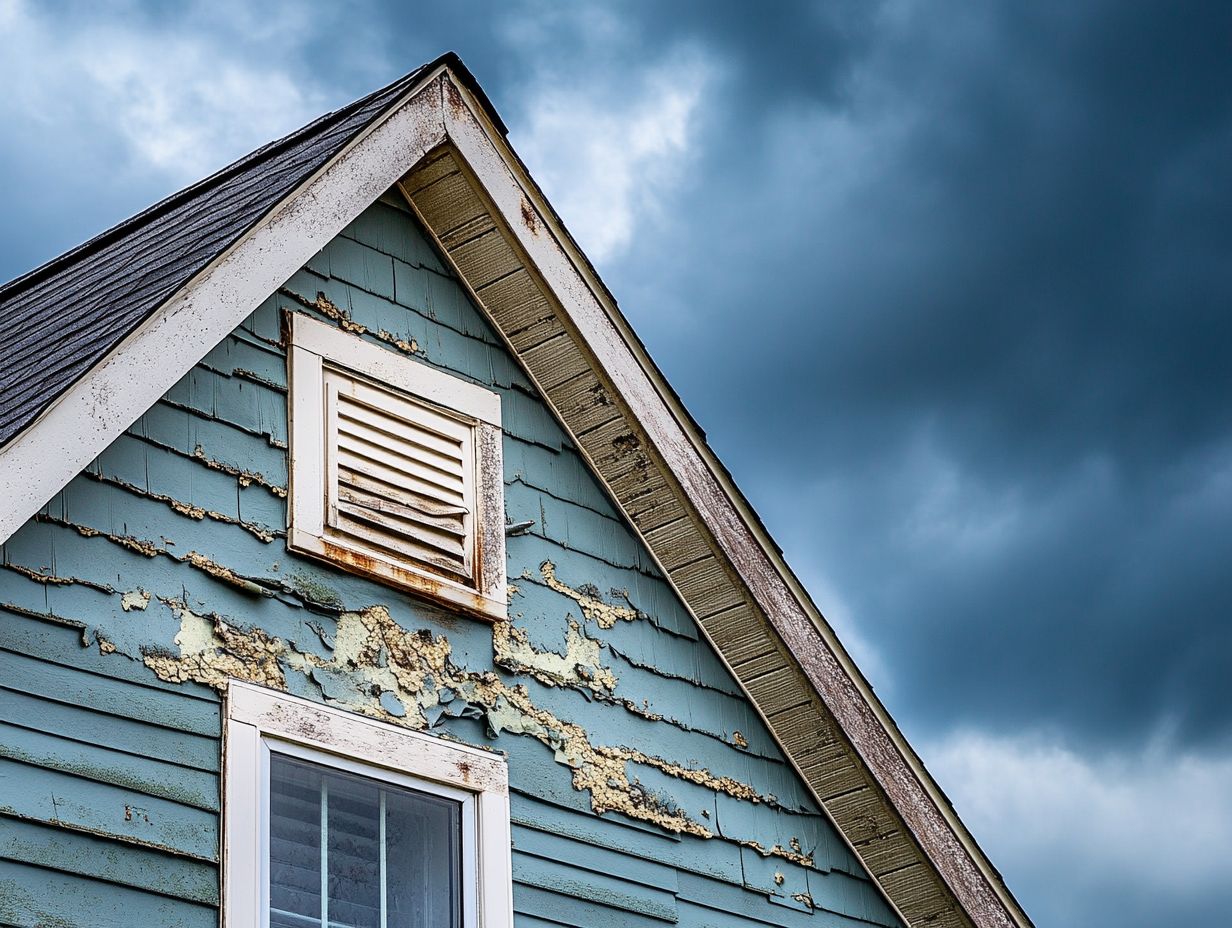
Improperly installed roofing can lead to serious construction defects. These defects invite moisture intrusion, resulting in flooding issues that extend beyond the roof and impact the foundation soil of your home. Don’t let improper roofing threaten your home! Take charge of your roofing choices today!
Choosing the right roofing materials is crucial for effective waterproofing. Options like asphalt shingles, metal panels, and tiles each come with distinct advantages. Metal roofs are known for their durability and exceptional weather resistance. On the other hand, asphalt shingles are often preferred for their affordability and ease of installation.
However, if these materials are not installed correctly, the risk of leaks can soar. This creates dangerous conditions that jeopardize your home’s strength.
To mitigate these risks, you must hire qualified professionals who adhere to proper installation techniques. Regular maintenance checks are also essential. This proactive approach safeguards you against costly repairs and water damage down the line.
5. Using Low-Quality or Improper Materials
Using low-quality materials can cause waterproofing mistakes. This jeopardizes your basement’s strength and increases construction defects over time.
Investing in high-quality waterproofing materials ensures that the installation process is effective and durable, safeguarding your home from water damage.
This thoughtful approach boosts your property’s strength against moisture and preserves its value. When you prioritize quality over cost, the upfront investment may be steeper, but the long-term savings from avoided repairs and an increase in property value far outweigh those initial expenses.
Over time, these premium materials provide you with peace of mind, significantly reducing the risks associated with compromised structural strength.
What Are the Benefits of Weatherproofing Your Home?
Weatherproofing your home brings a wealth of advantages. It bolsters protection against water damage and significantly reduces the risk of flooding issues. By implementing preventative measures and effective waterproofing techniques, you can achieve substantial savings on potential basement repairs.
This process shields your investment from damage and enhances your property s overall value. With building materials remaining intact and free from moisture-related issues, you can expect a much longer lifespan for your foundational elements.
Moreover, effective waterproofing contributes to improved energy efficiency by helping to maintain a stable indoor climate, ultimately leading to lower utility bills.
By minimizing the risk of severe water damage, you can enjoy peace of mind, confident that you are preventing costly repairs while enhancing your overall homeownership experience. Start weatherproofing your home today to secure your investment!
What Are the Different Areas of a Home That Need Weatherproofing?
Various areas of your home, such as the foundation, attic, crawl spaces, and overall building envelope, require focused attention for effective weatherproofing. This safeguards against moisture intrusion and the myriad issues it brings.
Each of these spaces has unique vulnerabilities that, if ignored, can lead to considerable damage. For instance, if your foundation isn t sealed properly, groundwater can seep in, setting the stage for mold growth and structural concerns.
The attic, often overlooked, can suffer from inadequate insulation and ventilation, leading to condensation buildup. Crawl spaces are notorious for trapping dampness when not well-ventilated, inviting pests and rotting wood into the mix.
By employing waterproof membranes, sealants, and efficient drainage systems, you can effectively mitigate these risks. Neglecting these essential weatherproofing measures can result in costly repairs and health hazards, as stagnant water and damp materials create a perfect breeding ground for mold.
How Can Regular Maintenance Help Prevent Weatherproofing Failures?
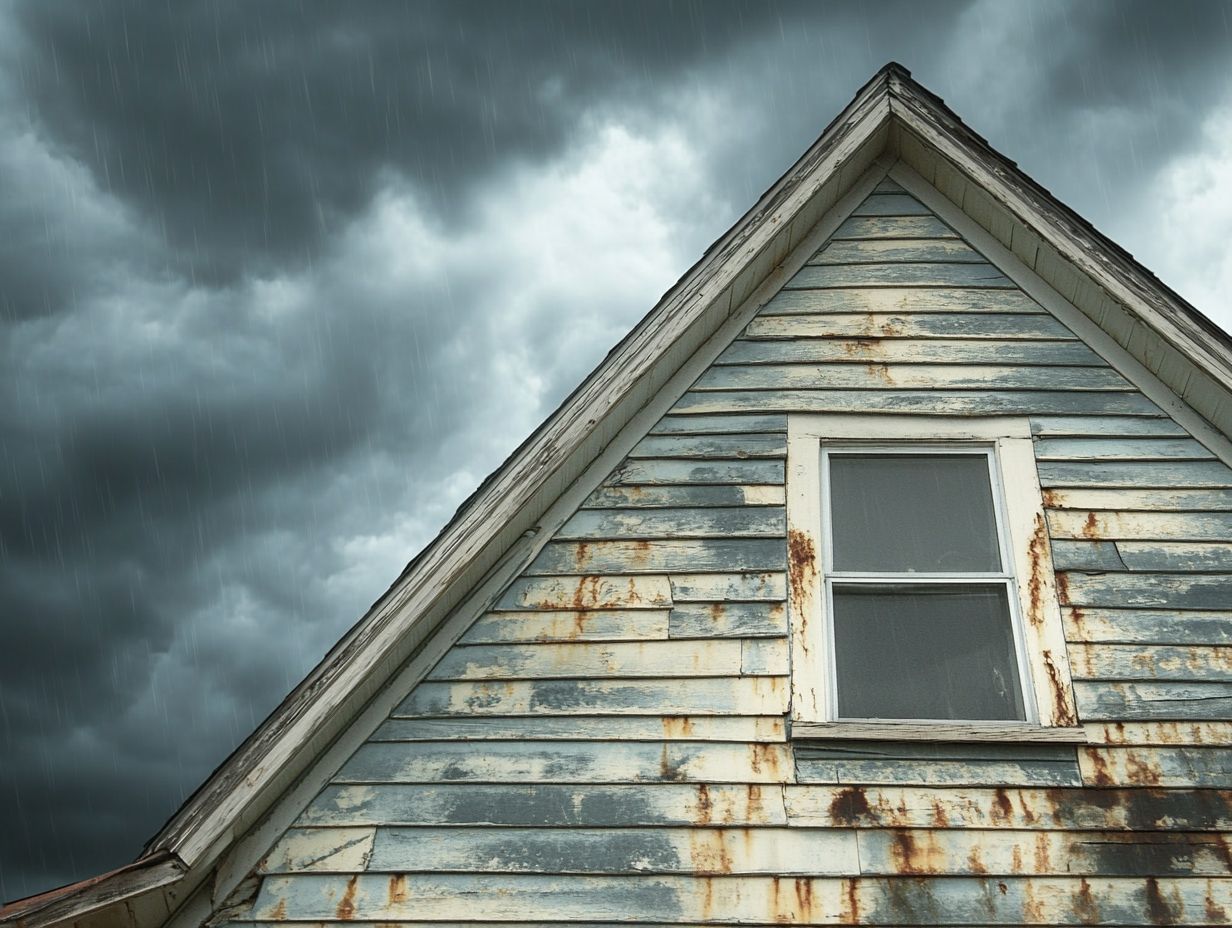
Regular maintenance is essential for preventing weatherproofing failures. It ensures that your waterproofing installations remain effective and minimizes the risk of water getting inside your home.
As a homeowner, prioritizing periodic inspections and routine tasks is key to assessing areas susceptible to moisture, like basements, attics, and around windows.
By conducting these checks, you empower yourself to identify potential signs of damage. This helps you take proactive measures to protect your home.
Neglecting these essential practices can lead to significant problems, such as structural damage. Mold growth can also occur, both of which are costly and hazardous.
By staying ahead of potential issues, you can maintain a safe and dry living environment while safeguarding your property s value.
What Are Some Warning Signs of Weatherproofing Failures?
Being aware of the warning signs of weatherproofing failures like visible water damage, musty odors, and poor drainage empowers you to tackle issues before they escalate into significant flooding problems.
Recognizing these indicators early can prevent extensive damage and save you a substantial amount in repair costs. It s wise to routinely check for cracked foundations, peeling paint, or mold growth; these could signal underlying moisture issues.
A functional drainage system is vital in mitigating these problems, as it effectively directs water away from your home and minimizes the risk of water accumulation.
By ensuring your gutters are clear and downspouts are channeling water properly, you can make a significant difference in maintaining your property s integrity while keeping repairs manageable.
How Can a Professional Help with Weatherproofing?
Engaging waterproofing contractors for professional assistance ensures that your home’s waterproofing needs are met with precision. Their expert inspections and tailored installation of appropriate services can make a big difference.
These professionals bring a wealth of knowledge and experience, enabling them to identify vulnerabilities that might escape an untrained eye. They provide custom solutions that cater specifically to the unique conditions of your property.
Their expertise empowers them to implement high-quality materials and advanced techniques. This ensures that the waterproofing systems they install will function optimally for the long term.
Choosing qualified contractors is essential; their understanding of local regulations and building codes guarantees compliance. This prevents costly future repairs and ensures you enjoy peace of mind as a homeowner.
What Are Some Tips for DIY Weatherproofing?
DIY weatherproofing is a smart way to protect your home! It can be a savvy investment as long as you employ the right techniques and high-quality materials.
Proper installation is key to minimizing future basement repairs. By choosing top-notch sealants, moisture barriers, and protective coatings, you can effectively fend off water damage and leaks.
It s crucial to identify the specific vulnerabilities in your home, such as cracks in the foundation or gaps around windows and doors. This allows you to focus your efforts where they matter most.
Incorporating weatherstripping, opting for exterior paint with water-repellent properties, and ensuring proper drainage will significantly bolster your weatherproofing efforts.
Don t wait! Schedule your maintenance checks twice a year to keep your home safe. This diligence ensures that your weatherproofing remains effective for years to come.
Got Questions? We ve Got Answers!
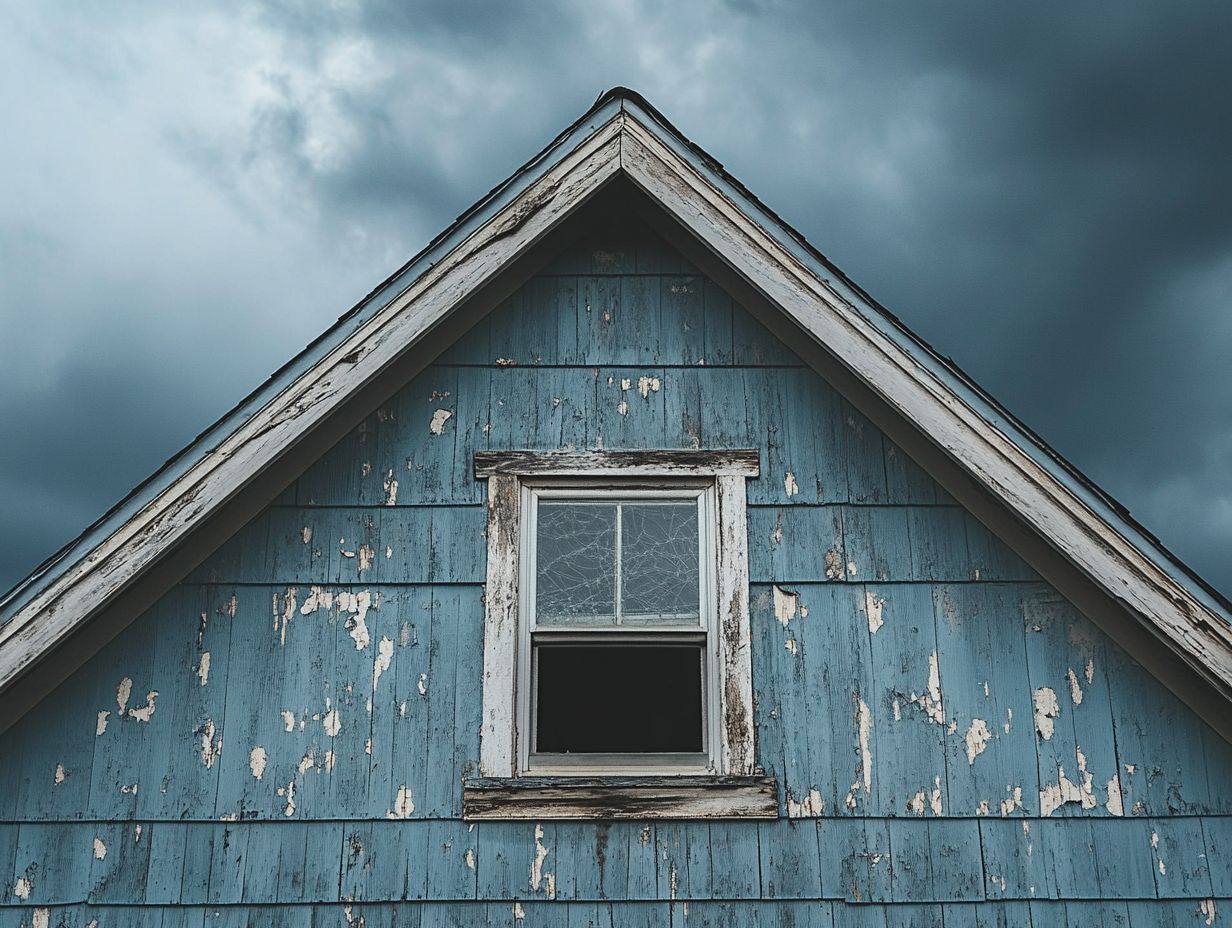
What are the five common weatherproofing failures to avoid?
The five common weatherproofing failures to avoid include: improper installation, lack of maintenance, use of poor-quality materials, poor design, and ignoring local weather conditions. To learn more about preventing these issues, check out these effective weatherproofing tips for homeowners.
How does improper installation contribute to weatherproofing failures?
Improper installation creates gaps, cracks, and weak spots. These allow water and air to enter a building, leading to water damage and energy loss.
What role does maintenance play in preventing weatherproofing failures?
Regular maintenance, like sealing cracks and replacing worn materials, is vital. If neglected, small issues can escalate into major problems.
How can using poor quality materials impact weatherproofing?
Poor quality materials may seem cheaper, but they lack durability. This can lead to early failure of the weatherproofing system, leaving buildings at risk from the weather.
Why is it important to consider local weather conditions when weatherproofing a building?
Local weather, like heavy rain or extreme heat, significantly affects weatherproofing effectiveness. Choosing the right materials for the climate is crucial to prevent failures, and exploring creative weatherproofing solutions can help ensure your home stays protected.
Can poor design contribute to weatherproofing failures?
Yes, poor design can cause issues like improper drainage and inadequate insulation. Consulting with a professional is essential when planning a weatherproofing system.

